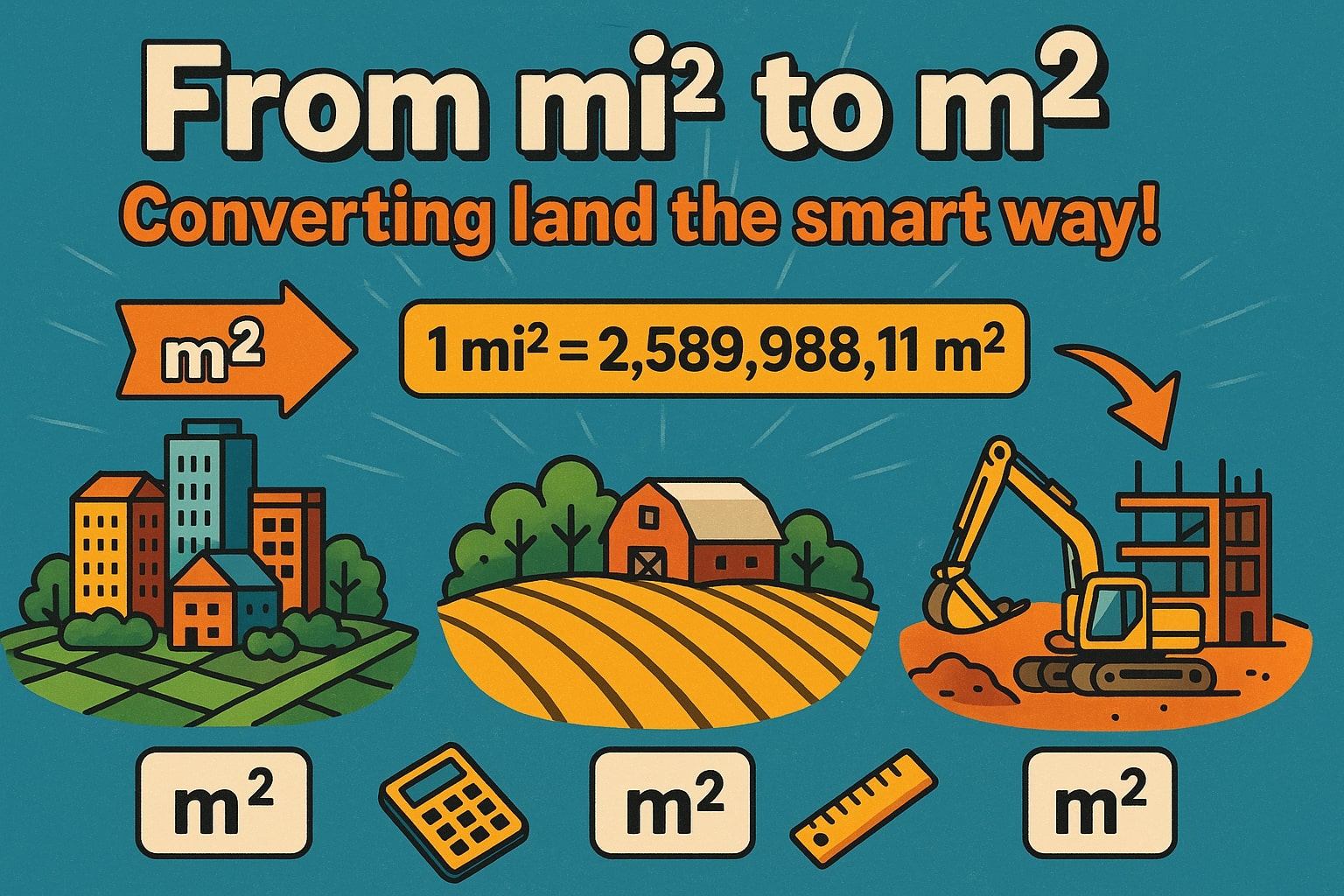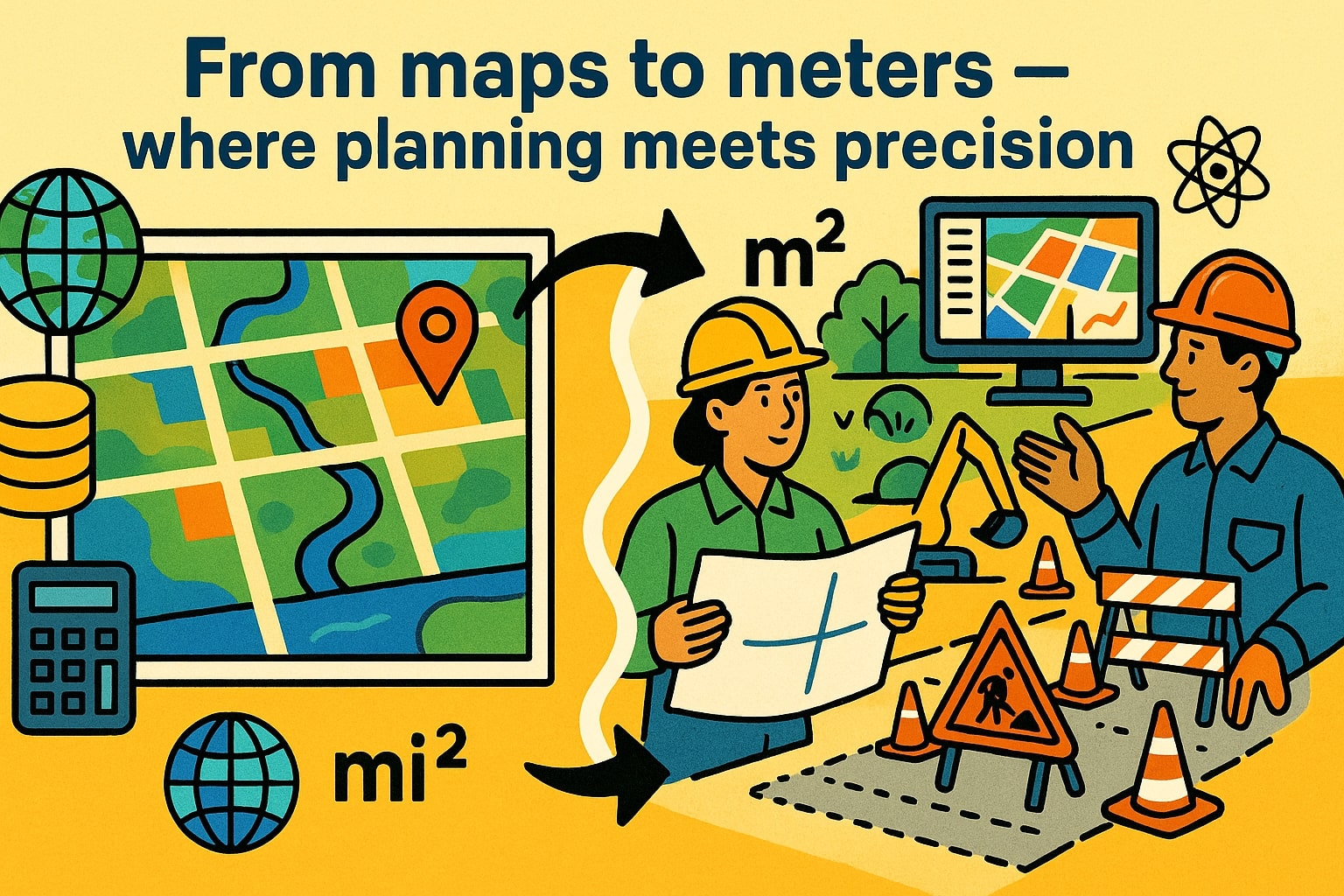square mile to square meter – How to convert mi² to m²
Square miles are common when describing large land areas, especially in the United States and UK. But much of the world — and most modern engineering, mapping, and construction — relies on square meters (m²). If you’re comparing property sizes, assessing development plans, or translating land data between imperial and metric systems, converting from mi² to m² is essential.

Here’s the official conversion factor:
1 square mile = 2,589,988.11 square meters
To move from mi² to m², just multiply by that number.
Formula:
square meter = square mile × 2,589,988.11
Example: converting mi² to m²
Let’s say you're analyzing a suburban region that spans 2.4 square miles. Here’s how to convert it:
square meter = 2.4 × 2,589,988.11 = 6,215,971.46
So, 2.4 mi² equals approximately 6,215,971 m² — an area that could hold neighborhoods, industrial zones, or multiple campuses.
To convert instantly, try our Area Converter or explore more formats with Conversion tools.
Did you know?
-
The total area of Chicago is about 234.5 mi², which equals over 607 million square meters.
-
Highway infrastructure projects often begin in square miles for zoning and land permits, but shift to square meters for material specs and costing.
-
Olympic venues typically occupy tens of thousands of m² — fitting dozens of them in a single square mile is common in host city planning.
-
Smart city mapping platforms use square meters as the core unit to measure things like surface coverage, green space, and walkability.
-
Converting from mi² to m² is often the first step in aligning U.S.-based land records with international environmental or real estate systems.
From regional maps to real-world measurements
Square miles are ideal when you’re looking at land from above — in a GIS platform, a government report, or a property deed. But when you need precision on the ground — where materials are ordered, foundations are poured, and infrastructure is built — it all comes down to square meters.
In urban development, this switch is routine. A city council may approve a 3-square-mile development zone, but engineers will break that into millions of square meters to estimate the cost of roads, utilities, and landscaping. The same applies to solar farms, airports, or logistics hubs — designed in imperial, executed in metric.
And because most scientific and international databases default to square meters, converting land data early avoids errors when models, reports, and systems start interacting.

The conversion that connects two systems
When you need to bridge U.S. land units with global standards, start here:
square meter = square mile × 2,589,988.11
It’s a single step that turns aerial estimates into ground-level detail, making your land data compatible across systems, platforms, and continents.
Use our Area Converter for fast calculations, or explore more tools with Conversion tools to work across any unit of space.

